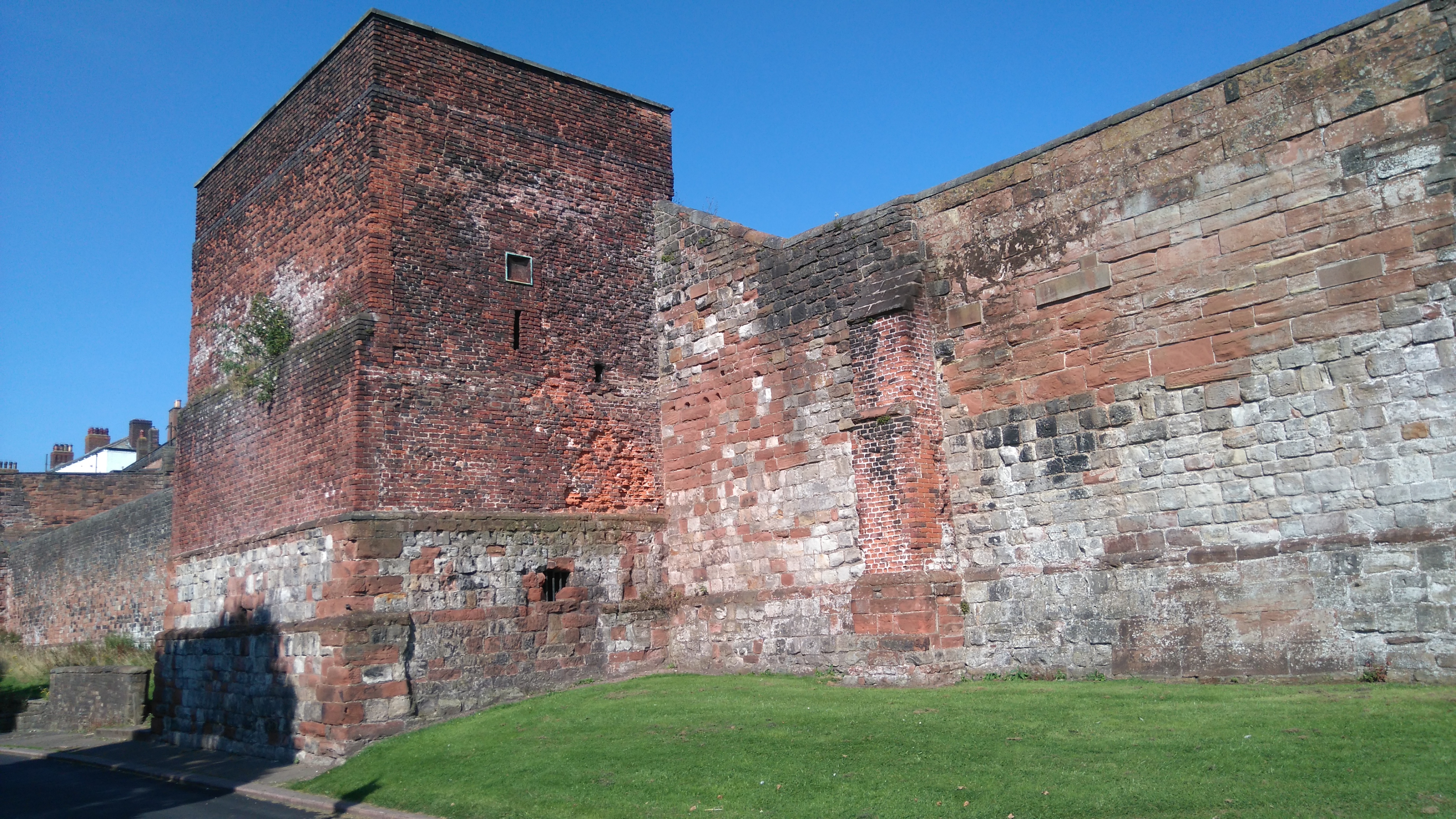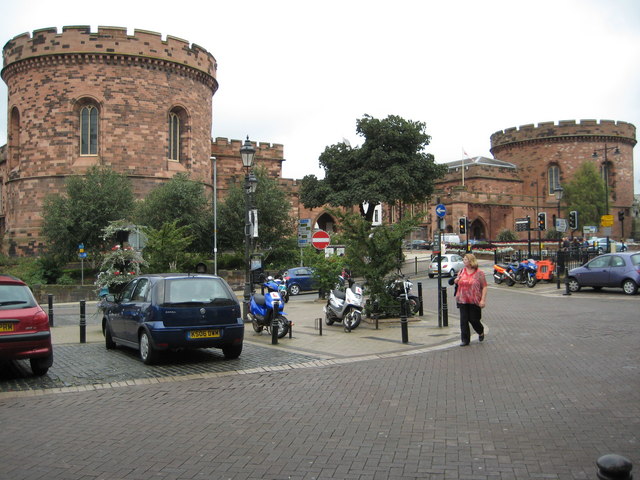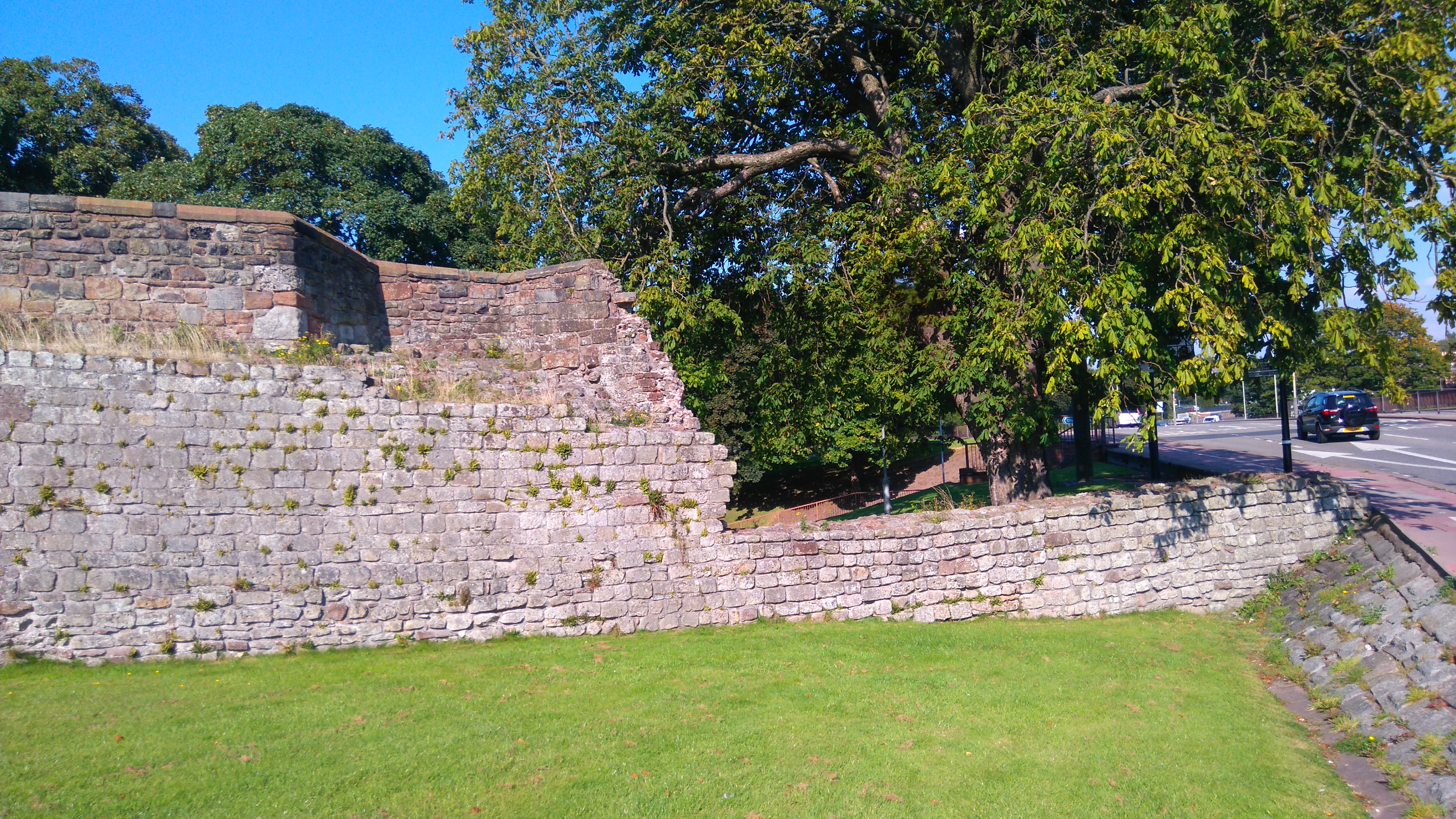Carlisle city walls on:
[Wikipedia]
[Google]
[Amazon]

 Carlisle city walls were a defensive structure surrounding the centre of
Carlisle city walls were a defensive structure surrounding the centre of
 The Roman city of Carlisle was walled but the
The Roman city of Carlisle was walled but the
 The walls fell into disrepair at various times. A 1684 survey reported that The Citadel had been almost destroyed by the Scots. By the end of the eighteenth-century, the need for easier access for traffic and the need for better ventilation of the crowded city led to demands for the walls' demolition and an
The walls fell into disrepair at various times. A 1684 survey reported that The Citadel had been almost destroyed by the Scots. By the end of the eighteenth-century, the need for easier access for traffic and the need for better ventilation of the crowded city led to demands for the walls' demolition and an

 The West Walls are still needed to retain a former
The West Walls are still needed to retain a former
Carlisle, Cumbria
Carlisle ( , ; from xcb, Caer Luel) is a city that lies within the Northern English county of Cumbria, south of the Scottish border at the confluence of the rivers Eden, Caldew and Petteril. It is the administrative centre of the City ...
. The city walls
A defensive wall is a fortification usually used to protect a city, town or other settlement from potential aggressors. The walls can range from simple palisades or earthworks to extensive military fortifications with towers, bastions and gates ...
ran from Carlisle Castle
Carlisle Castle is a medieval stone keep castle that stands within the English city of Carlisle near the ruins of Hadrian's Wall. First built during the reign of William II in 1093 and rebuilt in stone under Henry I in 1122, the castle is over ...
in the north-west of the city to The Citadel
The Citadel, The Military College of South Carolina, commonly known simply as The Citadel, is a public senior military college in Charleston, South Carolina. Established in 1842, it is one of six senior military colleges in the United States. ...
in the south-east. Between these points, the city was protected by the former North and East Walls (demolished around 1811) and the West Walls which remain largely intact. The line of the walls can still be followed with the exception of the southernmost end of the West Wall which has been built over. The perimeter, including the castle, is approximately which is comparable to Southampton town walls but less than Chester city walls
Chester city walls consist of a defensive structure built to protect the city of Chester in Cheshire, England. Their construction was started by the Romans when they established the fortress of Deva Victrix between 70 and 80 E It originat ...
.
Construction
 The Roman city of Carlisle was walled but the
The Roman city of Carlisle was walled but the mediaeval
In the history of Europe, the Middle Ages or medieval period lasted approximately from the late 5th to the late 15th centuries, similar to the post-classical period of global history. It began with the fall of the Western Roman Empire a ...
walls were built to replace timber structures in the latter half of the twelfth-century. The North Walls ran roughly east-southeastwards from the castle to Scotchgate and then on to Philipson's Tower. Here it turned roughly south to The Citadel
The Citadel, The Military College of South Carolina, commonly known simply as The Citadel, is a public senior military college in Charleston, South Carolina. Established in 1842, it is one of six senior military colleges in the United States. ...
. The Citadel was built as a gate by Stefan von Haschenperg
Stefan von Haschenperg was a military engineer employed by Henry VIII of England in the 1540s.
Career
Very little is known of Stefan's career, however he was mentioned as a gentleman of Moravia, and subject of Bohemia, in a letter from the Rege ...
in the 1540s to replace an earlier structure. It was later blocked and access to the city from the south was diverted around it through a new gate, Englishgate, built between The Citadel and Collier's Gate.
Demolition
Act of Parliament
Acts of Parliament, sometimes referred to as primary legislation, are texts of law passed by the legislative body of a jurisdiction (often a parliament or council). In most countries with a parliamentary system of government, acts of parliame ...
was passed in 1807. The stone was used to redevelop The Citadel as a court
A court is any person or institution, often as a government institution, with the authority to adjudicate legal disputes between parties and carry out the administration of justice in civil, criminal, and administrative matters in acco ...
building and in the construction of a new Eden Bridge to the north of the city. Both these projects involved Thomas Telford
Thomas Telford FRS, FRSE, (9 August 1757 – 2 September 1834) was a Scottish civil engineer. After establishing himself as an engineer of road and canal projects in Shropshire, he designed numerous infrastructure projects in his native Scot ...
and Robert Smirke.
More recent changes
 The West Walls are still needed to retain a former
The West Walls are still needed to retain a former river cliff
A cut bank, also known as a river cliff or river-cut cliff, is the outside bank of a curve or meander in a water channel ( stream), which is continually undergoing erosion.Essentials of Geology, 3rd Ed, Stephen Marshak Cut banks are found in ab ...
on the River Caldew and were not demolished. They have however been considerably altered over the years. Comparisons between old engraving
Engraving is the practice of incising a design onto a hard, usually flat surface by cutting grooves into it with a burin. The result may be a decorated object in itself, as when silver, gold, steel, or glass are engraved, or may provide an in ...
s and current archaeological evidence suggest the wall has been straightened. Between the bridge and the castle, there were houses built up against the walls until 1952. Other buildings erected against the walls have been largely removed so the walls are visible again. Remaining buildings have been listed
Listed may refer to:
* Listed, Bornholm, a fishing village on the Danish island of Bornholm
* Listed (MMM program), a television show on MuchMoreMusic
* Endangered species in biology
* Listed building, in architecture, designation of a historicall ...
because they incorporate wall fragments.
Short lengths of the North and West Walls run south from the castle to a city centre bypass that separates the castle from the city centre. The construction of the bypass required the existing gap in the West Walls to be widened and the surviving fragment of the North Walls to be truncated further. The gap in the West Walls includes the site of Irishgate and this is commemorated by a modern footbridge.
References
{{coord, 54.894, -2.939, display=title City walls in the United Kingdom Grade I listed buildings in Cumbria History of Carlisle, Cumbria Buildings and structures in Carlisle, Cumbria